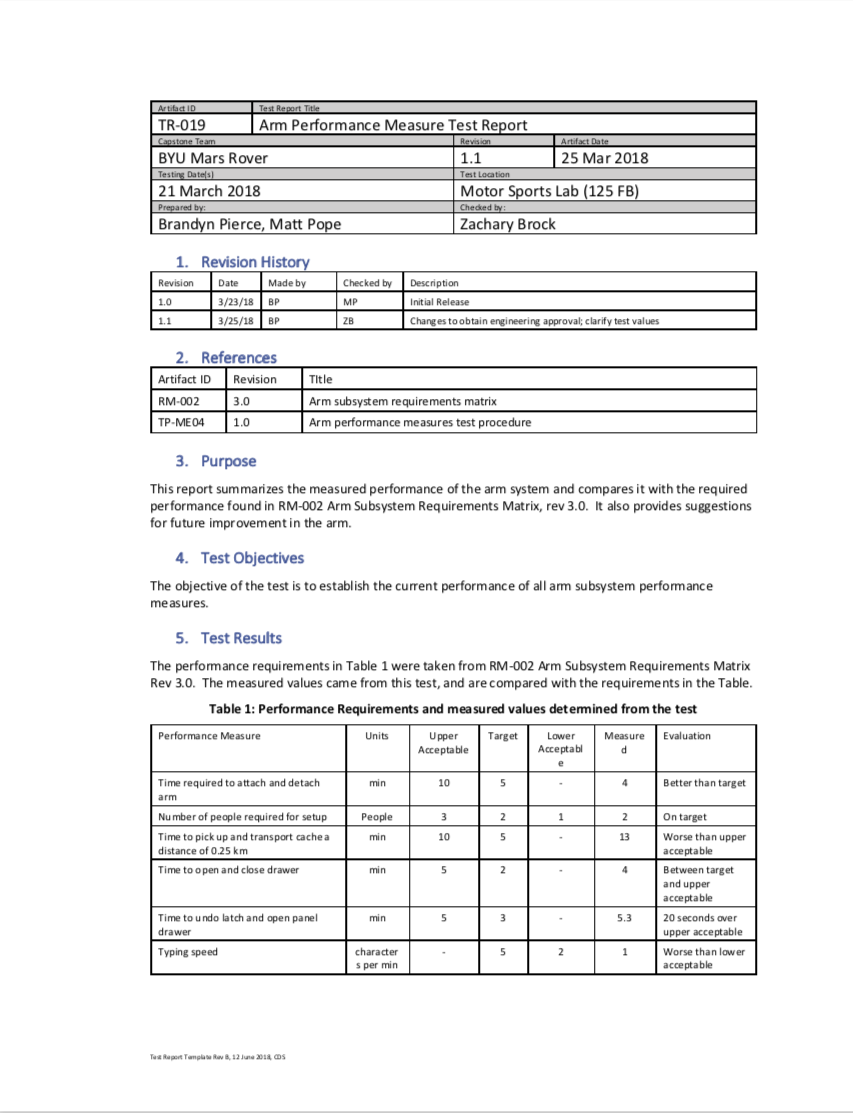Artifact Title Block
All Capstone artifacts should have an artifact title block. The artifact title block contains an ID, a title, a revision, a date, a creator, and in most cases, a checker. They can also have approval information. In some cases, you may also include license information such as copyright or Creative Commons or some other form. Each written artifact is contained in its own document and/or computer file. This allows easy changes to individual artifacts, without having to change the entire artifact package.
In addition to a title block, it is common for artifacts to have a revision history and a list of references.

Common title block components:
- The ID uniquely identifies a particular artifact. Sometimes the ID will have a code indicating the kind of artifact plus a number (usually sequential for a particular project). The Common Artifact table includes possible codes for given artifact types. Although these are not required, you can certainly feel free to use them if you wish.
- The artifact title should succinctly describes the artifact. Reviewing the artifact title should help a reader know whether the information they are looking for is likely to be found in a given artifact.
- Artifacts need to be readily identified, including their revision. In Capstone, we accomplish this by having an artifact title block. The artifact title block contains an ID, a title, a revision, a date, a creator, and in most cases, a checker. They can also have approval information.
- The revision and date identify a particular state of an artifact. It is common for artifacts to change over time. Thus, when we use an artifact in design work, we can refer to a particular revision, and it will be clearly known what details were considered.
- The artifact creator information indicates the individual who is primarily responsible for creating the artifact. This allows individuals to receive credit for their work. It also helps others know who to talk to if they have questions about the work.
- The checker indicates someone other than the creator who has reviewed the artifact looking for weaknesses or inconsistencies. It is always a good idea to have artifacts carefully checked. The mistakes that are caught and corrected during checking will help avoid revisions later, when they are much more expensive.
- Although in Capstone we do not require approval of individual artifacts, it is common in industry that artifacts may need to be approved by various business entities, such as production, sales, and service. Artifact approval ensures that all parts of the organization have input into the product development process.
- The revision history captures the changes that are made in the artifact after its initial release. For released artifacts, changes generally require an engineering change order. The revision process is much less formal prior to release.
While they may initially feel a bit complicated, these mechanics are widely used in industry and can be quickly learned, and they allow artifacts to be useful throughout the life of the product. Good artifacts are fundamental to good design.